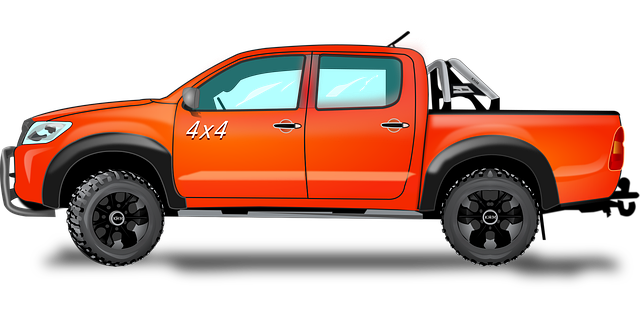RGV Wheels and Tires' brake calipers, crucial for vehicle safety, work with pads to slow or stop wheels. They come in various types, using hydraulic/pneumatic pistons for precise pressure application. Regular maintenance, including inspections and lubrications, is vital for optimal performance and safety, ensuring control and reduced stopping distances. Different caliper designs cater to diverse vehicle needs, while consistent servicing addresses wear and enhances RGV tire enthusiasts' driving experience.
“Unleash your vehicle’s true stopping power with an in-depth look at brake calipers, the unsung heroes of your braking system. This comprehensive guide navigates the essentials of these critical components, shedding light on their role in enhancing braking performance. We explore RGV wheels and tires’ impact on overall efficiency, delve into various caliper types, and provide essential maintenance tips for optimal results. By understanding brake calipers, you can ensure safe and controlled stops, making every drive more secure.”
- Understanding Brake Calipers: The Basics
- RGV Wheels and Tires: Enhancing Braking Performance
- Types of Brake Calipers: A Detailed Look
- Maintenance and Troubleshooting Tips for Optimal Braking
Understanding Brake Calipers: The Basics

Brake calipers are a fundamental component in a vehicle’s braking system, responsible for clamping down on the brake pads to slow or stop the rotation of wheels, like those offered by RGV Wheels and Tires. They work in tandem with brake pads, which press against the rotor, creating friction that reduces the vehicle’s speed. Understanding how calipers function is crucial when it comes to maintaining optimal braking performance and safety.
Calipers come in various types, but they all serve a similar purpose: to apply precise pressure on the brake pads for efficient stopping power. These mechanisms are typically made of metal and feature a housing that contains hydraulic or pneumatic pistons. When drivers engage the brakes, fluid pressure activates these pistons, forcing them to push against the pads, resulting in effective deceleration. Regular maintenance and inspection of calipers are essential to ensure they operate efficiently and consistently, contributing to overall vehicle control and safety.
RGV Wheels and Tires: Enhancing Braking Performance

RGV Wheels and Tires play a pivotal role in enhancing braking performance for vehicles. These specialized components are designed to work seamlessly with your calipers, ensuring precise control during critical stopping situations. High-quality RGV wheels and tires feature advanced materials and innovative engineering that improve friction and heat dissipation, allowing for shorter stopping distances and improved overall braking efficiency.
When upgrading or replacing brakes, investing in top-tier RGV wheels and tires is crucial. They not only offer better traction but also contribute to enhanced vehicle stability and control. By optimizing the contact point between tire and road, these wheels and tires help reduce brake fade, ensuring consistent stopping power even under heavy use. This focus on performance translates directly into safer driving experiences for all road conditions.
Types of Brake Calipers: A Detailed Look

Brake calipers come in various types, each designed for specific applications and offering unique advantages. One popular category is the floating caliper, often found on high-performance vehicles. These calipers allow for independent movement of the innards, enabling precise braking control and better heat dissipation. This design is ideal for cars with RGV wheels and tires that demand exceptional stopping power and consistent performance.
Another type is the fixed or slant caliper, commonly used on motorcycles and some sports cars. Here, the caliper body is directly mounted to the wheel hub, providing excellent thermal conductivity and a compact layout. This design choice often enhances aesthetics and reduces unsprung weight, benefiting overall vehicle dynamics. RGV wheels and tires enthusiasts appreciate these calipers for their contribution to handling and cornering precision.
Maintenance and Troubleshooting Tips for Optimal Braking

Regular maintenance is key to ensuring your brake calipers function optimally, especially for those who frequently tackle rugged terrain with their RGV wheels and tires. Inspect caliper pins, pistons, and pads for any signs of wear or damage. Clean the calipers and ensure proper lubrication of slides and pins to minimize friction and prolong their lifespan.
When troubleshooting braking issues, start by checking fluid levels in your brake system. Low or contaminated fluid can cause caliper problems. Examine the brakes for any leaks, especially around the caliper seals. If you notice a pulsating pedal or prolonged stopping distances, it might indicate worn-out pads or a misaligned caliper, emphasizing the importance of regular servicing for RGV tire enthusiasts to maintain control and safety on the road.
Brake calipers are a critical component in any vehicle’s braking system, and understanding their various types and proper maintenance is key to ensuring optimal stopping power. As discussed, RGV wheels and tires play a significant role in enhancing braking performance, making the choice of compatible calipers essential for safety and efficiency. By keeping up with regular maintenance and troubleshooting tips, drivers can ensure their brake calipers function at peak performance, providing confident control over their vehicles.



